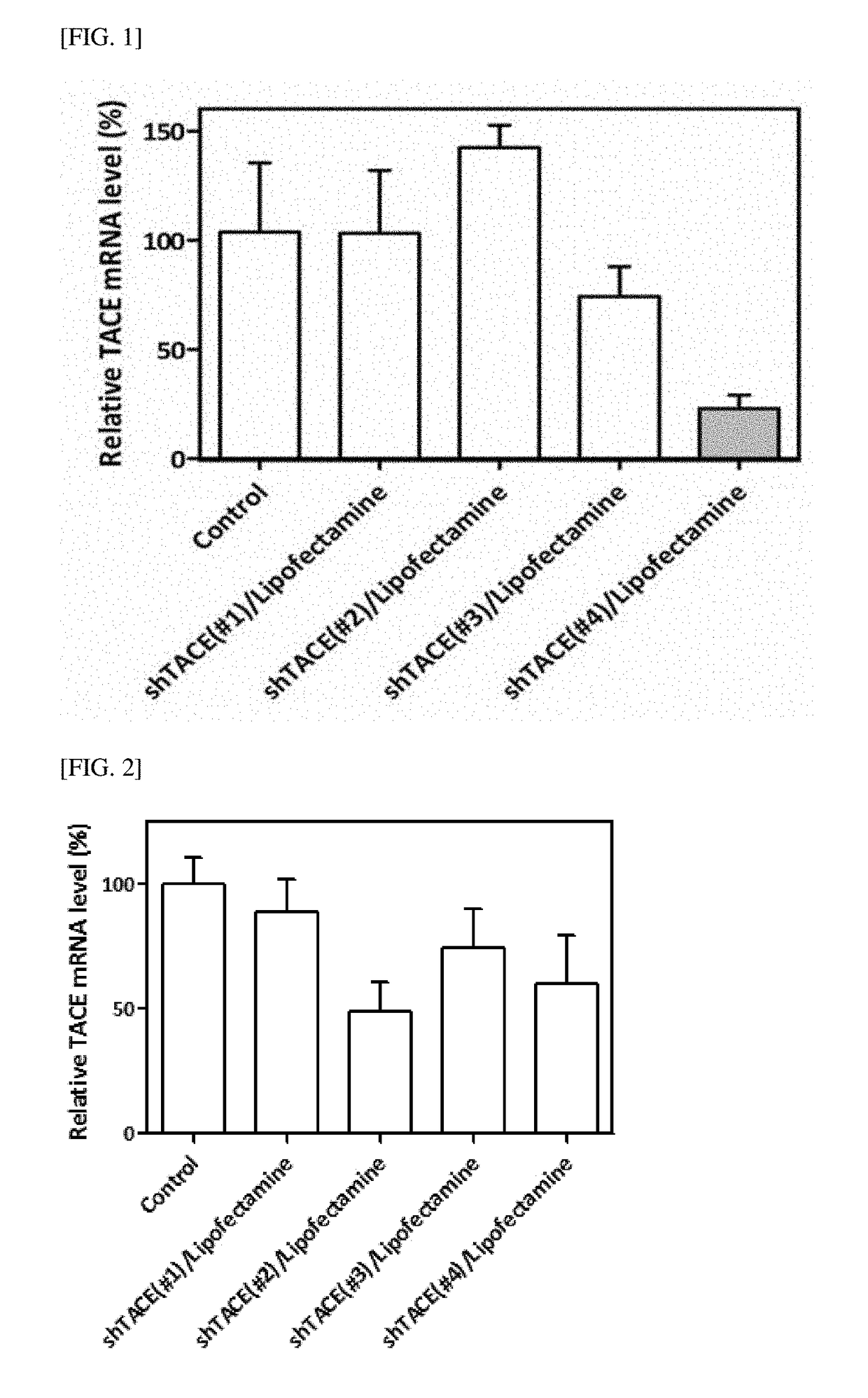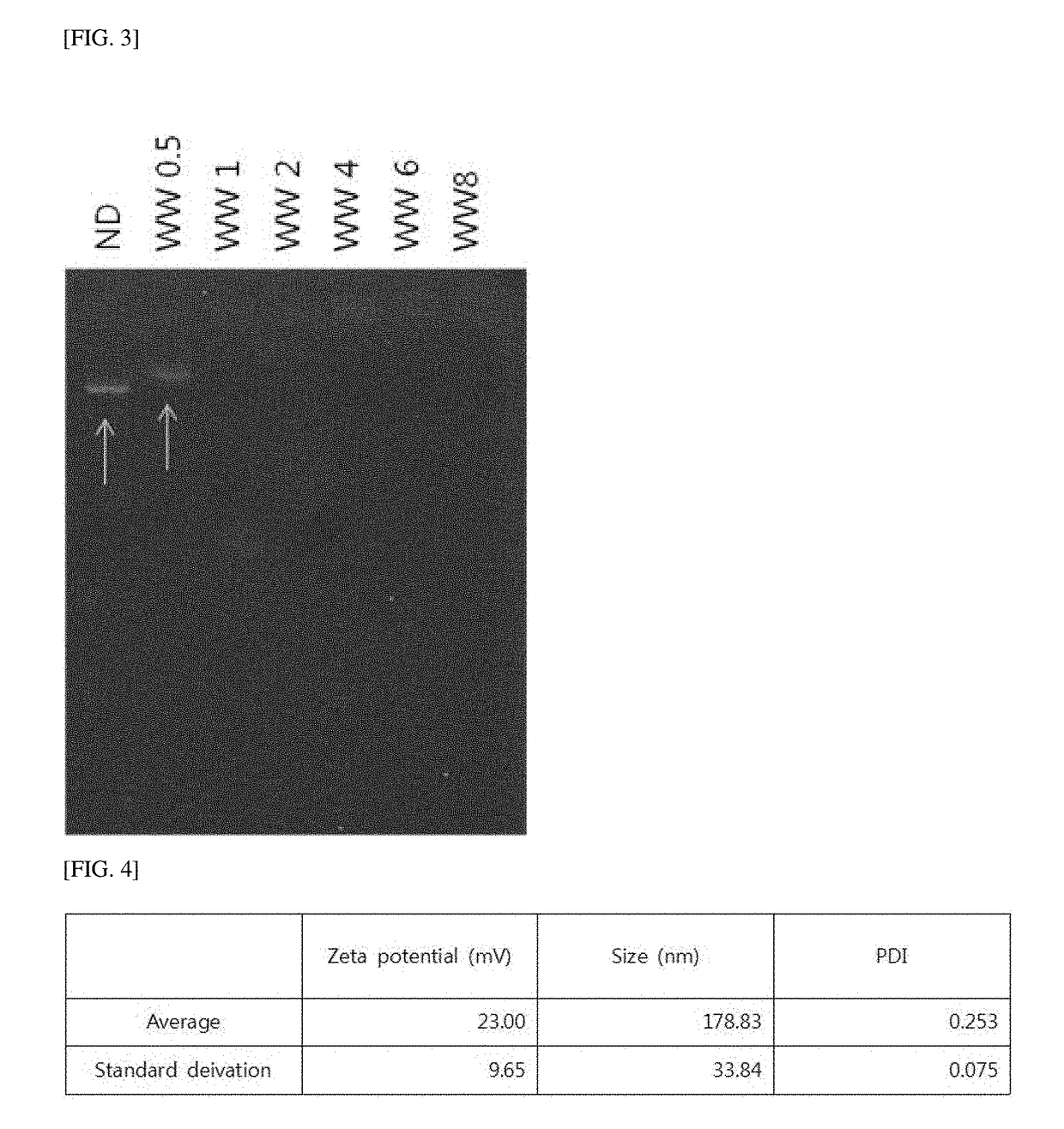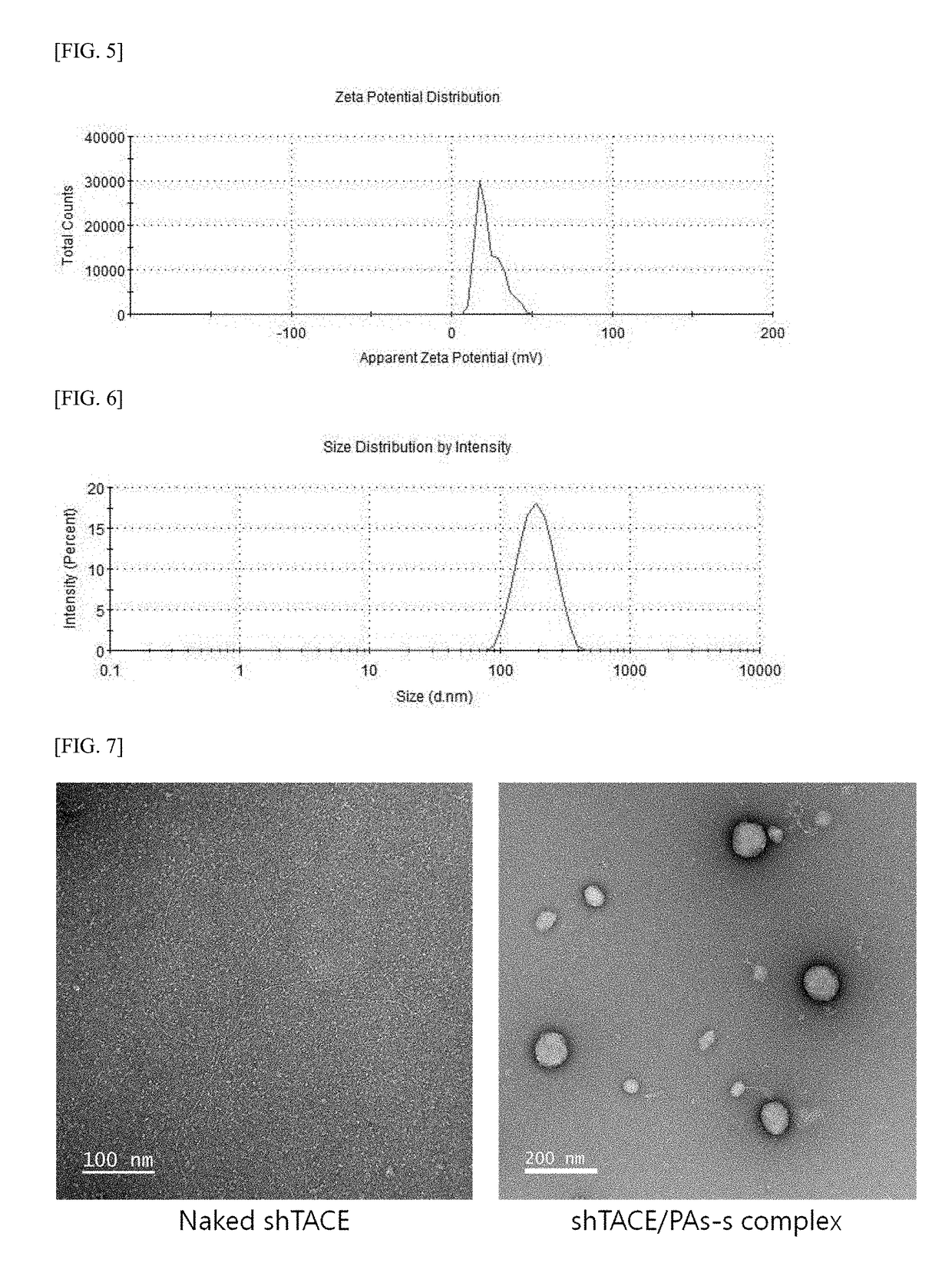Gene/carrier complex for preventing or treating inflammatory diseases
a carrier complex and inflammatory disease technology, applied in the field of inflammatory disease prevention or treatment, can solve the problems of affecting the survival rate of inflammatory diseases, low yield of shtace, and using miniprep, and achieve the effect of inhibiting expression
- Summary
- Abstract
- Description
- Claims
- Application Information
AI Technical Summary
Benefits of technology
Problems solved by technology
Method used
Image
Examples
preparation example 1
shTACE Vector
[0093]A plasmid vector including mouse shRNA (shTACE), which inhibits TACE expression with a RNA interference system, consists of a total of 6,669 base pairs, and has a U6 promoter. A vector was constructed by inserting mouse shTACE having a sequence of 19 bases (ACACCTGCTGCAATAGTGA) thereinto to selectively inhibit only TACE expression. For propagation and expression of the vector, an SV40 origin and a pUC origin were used. An ampicillin-resistant gene was added, and cells were transfected with the ampicillin-resistant gene. Thereafter, puromycin was used as a selection marker to separate the cells in which shTACE was stably expressed. To determine whether or not the mouse shTACE gene was properly inserted into the vector, a vector was constructed using an eGFP reporter gene. A sequence of a hairpin loop in the vector was TCAAGAG. A sequence of the mouse shTACE vector thus constructed was set forth in SEQ ID NO: 6.
[0094]Meanwhile, a therapeutic effect of the gene thera...
preparation example 2
shTACE Vector
[0095]A plasmid vector including human shRNA (shTACE), which inhibits TACE expression, consists of a total of 6,673 base pairs, and has a U6 promoter. A vector was constructed by inserting human shTACE having a sequence of 21 bases thereinto to selectively inhibit only TACE expression. A total of 4 types of human shTACE were obtained depending on the type of the inserted 21-base sequence (human shTACE). Specifically, they were named human shTACE #1 (SEQ ID NO: 2) having a base sequence of ggagatttgttaatgatacca, human shTACE #2 (SEQ ID NO: 3) having a base sequence of cctggttacaactcatgaatt, human shTACE #3 (SEQ ID NO: 4) having a base sequence of ggcgattaatgctacttgcaa, and human shTACE #4 (SEQ ID NO: 5) having a base sequence of ccattgtgtggataagaaatt. For propagation and expression of the vector, an SV40 origin and a pUC origin were used. An ampicillin-resistant gene was added, and cells were transfected with the ampicillin-resistant gene. Thereafter, puromycin was used ...
preparation example 3
arrier (PAs-s)
[0097]A gene carrier (PAs-s) including the acetate of disulfide-linked poly(oligo-arginine) is formed by polymerizing a monomeric peptide of Cys-(9×Arg)-Cys represented by SEQ ID NO: 11, in which a nine-arginine oligomer including cysteines at both ends thereof is a basic repeating unit.
[0098]First, a monomeric peptide of Cys-(9×Arg)-Cys was synthesized using Fmoc solid-phase peptide synthesis, in which each amino acid was extended one by one according to a predetermined sequence order and the α-amino group of the amino acid was protected with a 9-fluorenyl-methyloxycarbonyl (Fmoc) group. When a step of elongating the peptide chain was completed, a released form of the peptide was obtained by treatment with trifluoroacetic acid (TFA). Subsequently, a monomeric peptide of Cys-(9×Arg)-Cys in a TFA salt form was converted into an acetate form. That is, the TFA salt was substituted with acetate using ion exchange chromatography with AG1-X8 resins.
[0099]A monomeric peptide ...
PUM
| Property | Measurement | Unit |
|---|---|---|
| weight ratio | aaaaa | aaaaa |
| weight ratio | aaaaa | aaaaa |
| weight ratio | aaaaa | aaaaa |
Abstract
Description
Claims
Application Information
 Login to View More
Login to View More - R&D
- Intellectual Property
- Life Sciences
- Materials
- Tech Scout
- Unparalleled Data Quality
- Higher Quality Content
- 60% Fewer Hallucinations
Browse by: Latest US Patents, China's latest patents, Technical Efficacy Thesaurus, Application Domain, Technology Topic, Popular Technical Reports.
© 2025 PatSnap. All rights reserved.Legal|Privacy policy|Modern Slavery Act Transparency Statement|Sitemap|About US| Contact US: help@patsnap.com



